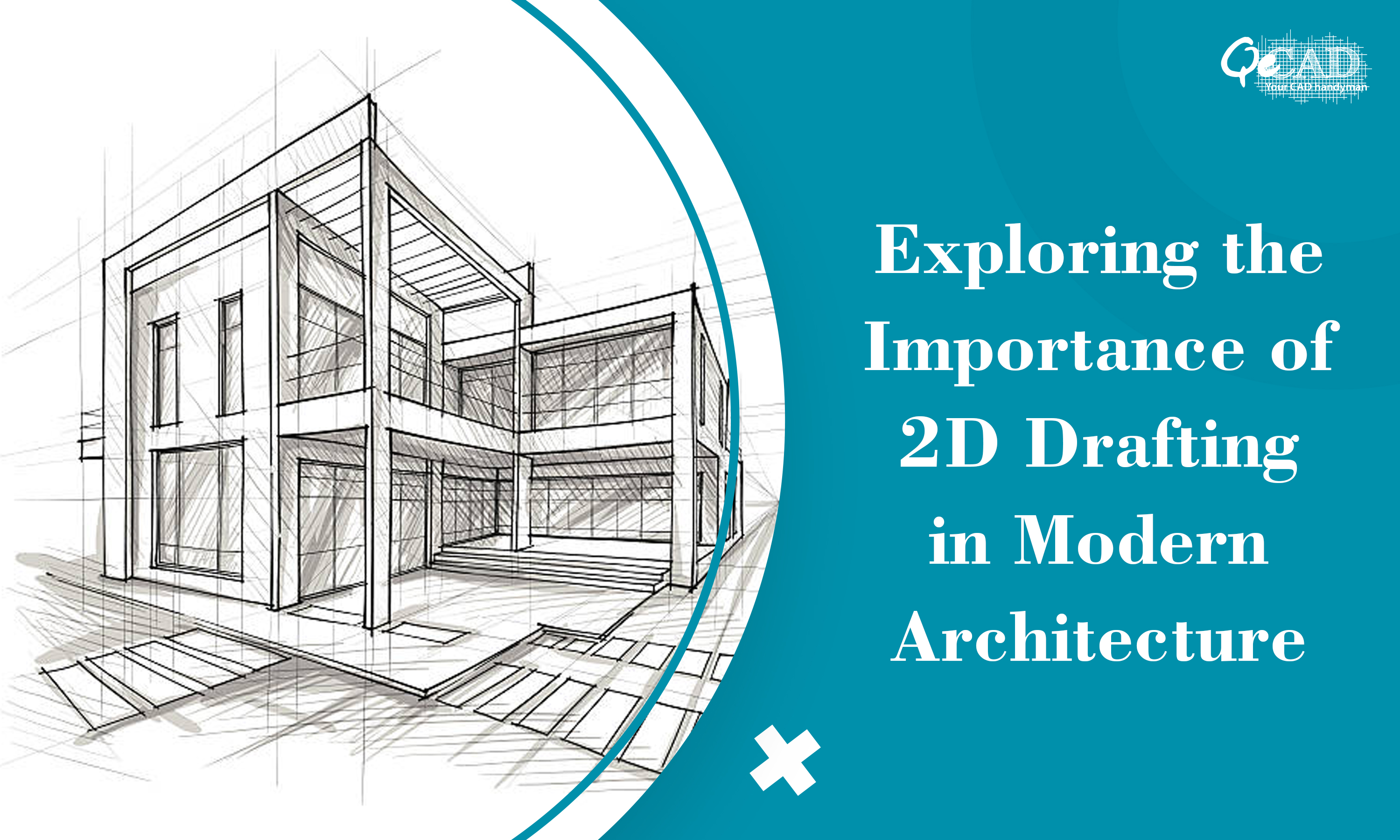
In the era of advanced 3D modelling software and virtual reality, one might question the necessity of traditional 2D drafting in architectural design. After all, why bother with flat drawings when technology offers immersive, three-dimensional representations? However, despite the allure of modern tools, Architectural Drafting Services remains a cornerstone of architectural practice for various reasons.
The below article explains as to why 2D drafting continues to be relevant across different types of architectural drawings.
The Timeless Role of 2D Drafting in Architecture
1) Clarity and Precision: One of the primary advantages of 2D drafting lies in its ability to communicate information with utmost clarity and precision. While 3D models provide a realistic depiction of a structure, Construction Drawing Services, a part of 2D drafting offers a level of detail and accuracy that is indispensable in architectural design. Floor plans, elevations, and sections produced through 2D drafting allow architects to communicate intricate details, such as dimensions, scale, and spatial relationships, with utmost clarity.
2) Efficiency and Familiarity: Despite the advancements in technology, many architects still rely on 2D drafting due to its efficiency and familiarity. For experienced professionals who have honed their skills using traditional drafting tools, transitioning to complex 3D software can be time-consuming and daunting. Moreover, 2D drafting remains a quick and straightforward method for sketching initial concepts and making rapid iterations during the design process.
3) Accessibility and Collaboration: While 3D models offer immersive experiences, they can be less accessible and collaborative compared to 2D drawings. Sharing and reviewing 2D drafts is often simpler, as they can be easily distributed in digital or printed formats. Architects can mark-up drawings, annotate specific details, and communicate design changes more effectively, fostering collaboration among project stakeholders, including clients, engineers, and contractors.
4) Regulatory Compliance and Documentation: In the architectural domain, adherence to building codes and regulations is paramount. 2D drafting plays a crucial role in producing construction documentation that meets legal requirements and regulatory standards. Architectural plans generated through 2D drafting serve as official records for obtaining permits, securing approvals, and ensuring compliance with zoning ordinances and safety regulations.
5) Cost-Effectiveness and Accessibility: While advanced 3D modelling software offers impressive capabilities, they often come with hefty price tags and steep learning curves. In contrast, 2D drafting tools are more accessible and cost-effective, making them suitable for architects operating on tight budgets or working in resource-constrained environments. Additionally, 2D drafting software tends to have lower hardware requirements, enabling architects to work efficiently on a wide range of devices.
6) Legacy and Tradition: Beyond its practical benefits, 2D drafting holds cultural and historical significance within the field of architecture. For centuries, architects have relied on drafting techniques such as orthographic projection and line drawing to communicate their visions. While technology has revolutionized the profession, the artistry and craftsmanship associated with traditional drafting techniques continue to resonate with practitioners who value heritage and tradition.
7) Versatility and Adaptability: Although 3D modelling has gained prominence in recent years, there are instances where 2D drafting remains the preferred method for certain types of architectural drawings. For example, schematic diagrams, site plans, and construction details are often best conveyed through 2D representations. Moreover, 2D drafting allows architects to integrate hand-drawn sketches and annotations seamlessly, adding a personal touch to their designs.
The Enduring Legacy of 2D Drafting in Architecture
While the advent of 3D modelling has transformed the architectural landscape, 2D drafting remains an indispensable tool for architects worldwide. Its unparalleled clarity, efficiency, and versatility make it well-suited for various types of architectural drawings, from initial concept sketches to detailed construction plans. As technology evolves, it’s essential to recognize the evergreen relevance of traditional drafting techniques and their enduring impact on the practice of architecture.
